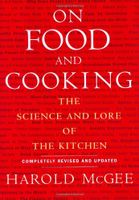Label
All
0
Clear all filters
An Ever-Changing Microcosm
Appears in
By Harold McGee
Published 2004
A given wine contains several hundred different kinds of volatile molecules, and those molecules have many different kinds of odors. In fact they run the gamut of our olfactory world. Some of the same molecules are also found in temperate and tropical fruits, flowers, leaves, wood, spices, animal scents, cooked foods of all kinds, even fuel tanks and nail polish remover. That’s why wine can be so evocative and yet so hard to describe: at its best, it offers a kind of sensory microcosm. And that little world of molecules is a dynamic one. It evolves over months and years in the bottle, by the minute in the glass, and in the mouth with every passing second. The vocabulary of wine tasting thus amounts to a catalogue of things in the world that can be smelled, and whose smell can be recognized, however fleetingly, in an attentive sip.
Become a Premium Member to access this page
Unlimited, ad-free access to hundreds of the world’s best cookbooks
Over 160,000 recipes with thousands more added every month
Recommended by leading chefs and food writers
Powerful search filters to match your tastes
Create collections and add reviews or private notes to any recipe
Swipe to browse each cookbook from cover-to-cover
Manage your subscription via the My Membership page
Best value
Part of
Advertisement
Related Recipes
-
-
-
-
Related Reference
-
-
-
-
Advertisement
The licensor does not allow printing of this title



